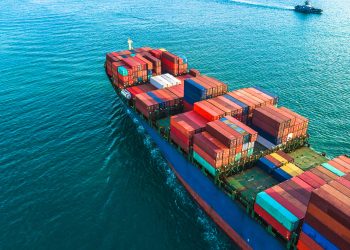In the video issued by the Port of Rotterdam, Heinrich Kerstgens, Managing Director at logistics company Contargo, explains why current trends in the container industry will ask for heavy investments in digitisation and decarbonisation.
This comes with the release of a new white paper by the Port of Rotterdam describing the impact of demographic changes, shifts in economic power, technological innovations and other mega trends on the container industry. The paper highlights that growth in trade is expected to be greater than total production growth, in the near future.
The paper makes distinguishes the following five mega trends:
- The evolving global trade: The share of international trade in global production has been growing steadily for many years as a consequence of the disappearance of statutory and cultural obstacles (both regionally as well as globally) for the global economy.
- The ongoing scale increases, consolidation and integration: One of the consequences of growing global trade is ever-increasing pricing pressure. Operational cooperation between container shipping companies to address this trend takes many forms, varying from slot chartering and agreements for sharing vessels, through to strategic alliances.
- The hinterland networks: Existing transport corridors by rail, road and inland waterways between the core of the EU, the Baltic Sea, the Mediterranean Sea area, Eastern and Central Europe and third countries will gain ground.
- The logistics patterns and digital transformation: It is expected that supply chains will also be redesigned in the future. After all, companies have no option but to operate as sustainable and efficient as possible; partly as this is increasingly prescribed by legislation and regulations and demanded by consumers, and partly because it reduces waste and fuel costs.
- The important IT innovations for container ports: Driven by increased competitiveness, the port sector has already embraced IT innovations to a certain extent. Some innovations are particularly relevant and will continue to influence almost all aspects of the trade process in the future.




























































